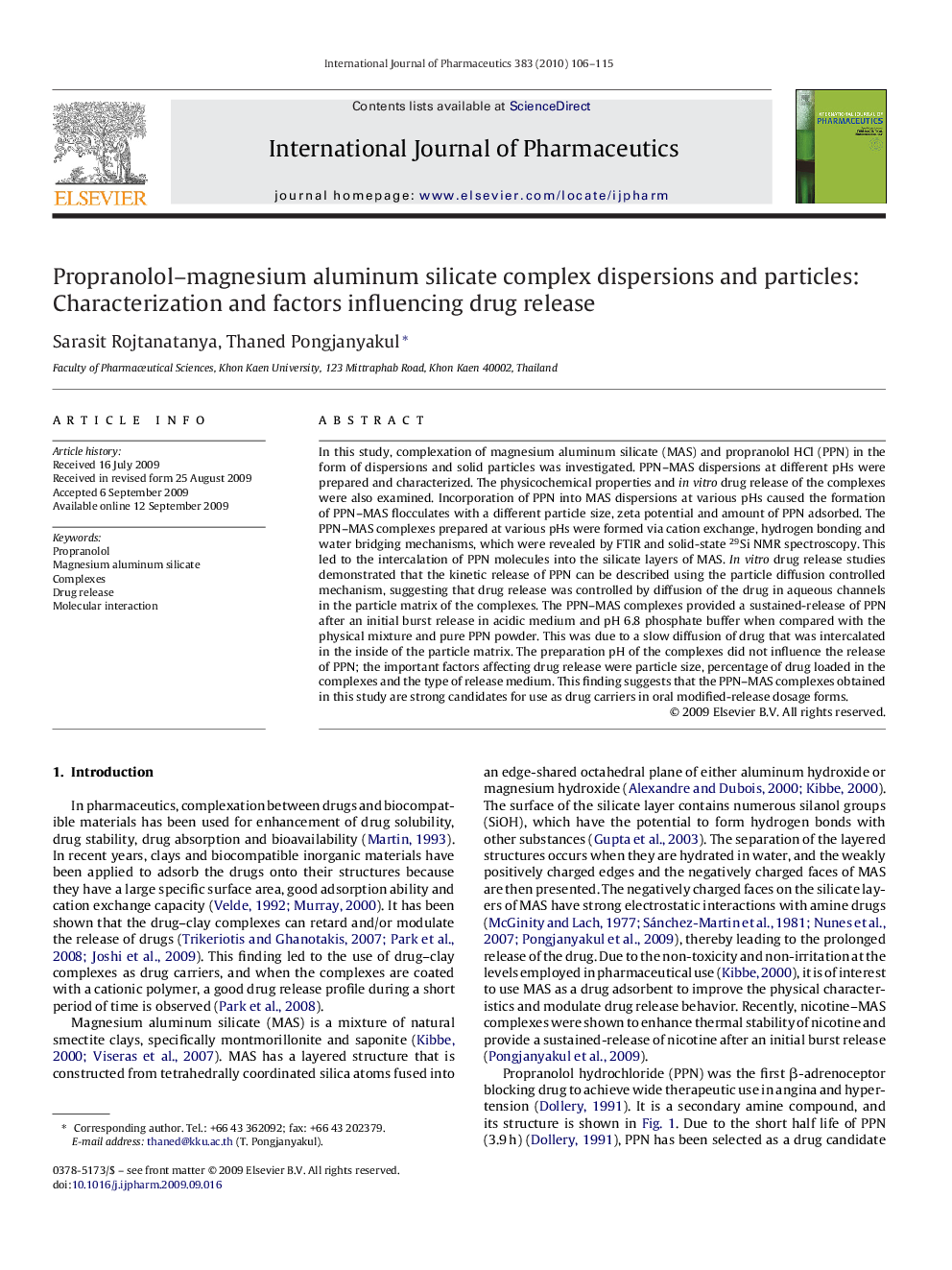| Article ID | Journal | Published Year | Pages | File Type |
|---|---|---|---|---|
| 2504563 | International Journal of Pharmaceutics | 2010 | 10 Pages |
In this study, complexation of magnesium aluminum silicate (MAS) and propranolol HCl (PPN) in the form of dispersions and solid particles was investigated. PPN–MAS dispersions at different pHs were prepared and characterized. The physicochemical properties and in vitro drug release of the complexes were also examined. Incorporation of PPN into MAS dispersions at various pHs caused the formation of PPN–MAS flocculates with a different particle size, zeta potential and amount of PPN adsorbed. The PPN–MAS complexes prepared at various pHs were formed via cation exchange, hydrogen bonding and water bridging mechanisms, which were revealed by FTIR and solid-state 29Si NMR spectroscopy. This led to the intercalation of PPN molecules into the silicate layers of MAS. In vitro drug release studies demonstrated that the kinetic release of PPN can be described using the particle diffusion controlled mechanism, suggesting that drug release was controlled by diffusion of the drug in aqueous channels in the particle matrix of the complexes. The PPN–MAS complexes provided a sustained-release of PPN after an initial burst release in acidic medium and pH 6.8 phosphate buffer when compared with the physical mixture and pure PPN powder. This was due to a slow diffusion of drug that was intercalated in the inside of the particle matrix. The preparation pH of the complexes did not influence the release of PPN; the important factors affecting drug release were particle size, percentage of drug loaded in the complexes and the type of release medium. This finding suggests that the PPN–MAS complexes obtained in this study are strong candidates for use as drug carriers in oral modified-release dosage forms.
